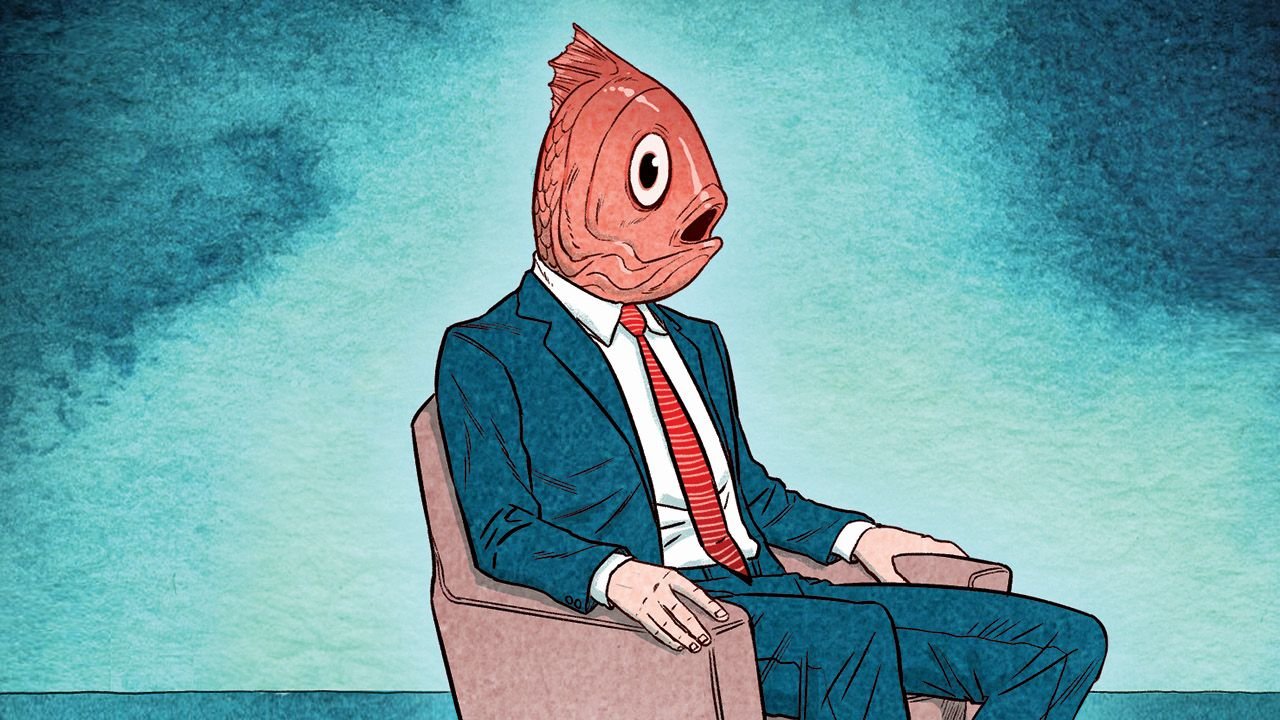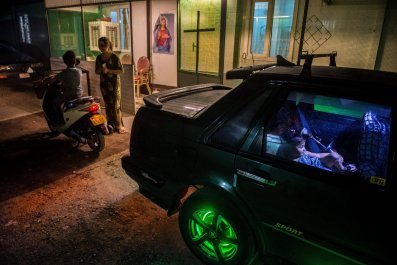Before human beings wrote books or did math or composed music, we made leather. There is evidence hunter-gatherers were wearing clothes crafted from animal skins hundreds of thousands of years ago, while in 2010 archaeologists digging in Armenia found what they believed to be the world's oldest leather shoe, dating back to 3,500 B.C. (It was about a women's size 7.) For a species sadly bereft of protective fur, being able to turn the skin of cows or sheep or pigs into clothing with the help of curing and tanning would have been a lifesaving advance, just like other vital discoveries Homo sapiens made over the course of history: the development of grain crops like wheat, the domestication of food animals like chickens, even the all-important art of fermentation. In each case, human beings took something raw from the natural world—a plant, an animal, a microbe—and with the ingenuity that has enabled us to dominate this planet, turned it into a product.
The natural world has its limits, though. Tanned animal skin may make for stylish boots, motorcycle jackets and handbags—supporting an industry worth about $200 billion a year—but it's still animal skin. That would seem to be an insurmountable problem if you're one of the hundreds of millions of vegetarians around the world, or even just someone who worries about the environmental impact of raising tens of billions of animals for clothing and food. But it's not the animal skin that makes leather leather—it's collagen, a tough, fibrous protein that is a major biological component of animal connective tissue, including skin. If there was a way to manufacture collagen alone, it might be possible to produce leather that even the most dedicated animal-rights activist could love.
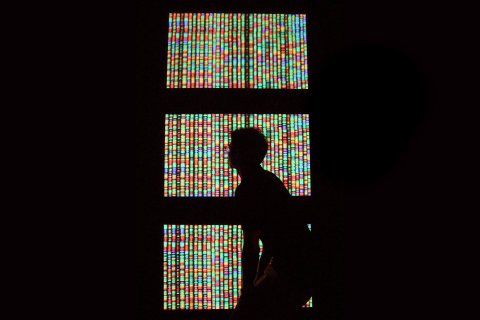
And that's exactly what's happening on the eighth floor of the cavernous Brooklyn Army Terminal on New York's waterfront, where Modern Meadow has its labs and offices. There, the 60-person startup takes tiny microbes and edits their DNA—the genetic code that programs their behavior—so they will yield collagen as a metabolic product, just as the yeast that brew beer create alcohol from grain sugar. The result is a microbiological factory, as the tweaked cells multiply in vats and the harvested collagen is processed. After a tanning procedure—one more sustainable than that used in standard tanning, since there is no animal hair or fat to remove from the microbe-grown collagen—what's left is a material that is biologically and chemically similar to conventional leather, save chiefly for the fact that no animals were harmed in its making. In fact, this biofabricated leather may be better than animal leather—Modern Meadow's microbes can produce collagen much faster than it would take to raise a cow or sheep from birth, and the company can work with brands to design entirely new materials from the cell level up. "It's biology meets engineering," says Andras Forgacs, the co-founder and CEO of Modern Meadow. "We diverge from what nature does, and we can design it and engineer it to be anything we want."
That is the promise of synthetic biology, a technology that is poised to change how we feed ourselves, clothe ourselves, fuel ourselves—and possibly even change our very selves. While scientists have for decades been able to practice basic genetic engineering—knocking out a gene or moving one between species—and more recently have learned to rapidly read and sequence genes, now researchers can edit genomes and even write entirely original DNA. That gives scientists incredible control over the fundamental code that drives all life on Earth, from the most basic bacterium to, well, us. "Genetic engineering was like replacing a red light bulb with a green light bulb," says James Collins, a biological engineer at the Massachusetts Institute of Technology and one of synthetic biology's early pioneers. "Synthetic biology is introducing novel circuitry that can control how the bulbs turn off and on."
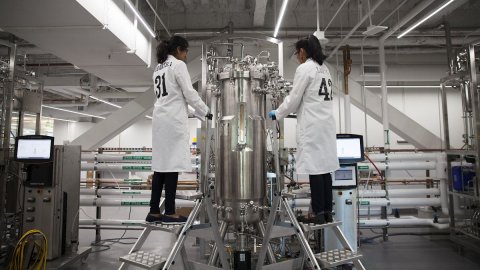
We can use that control to harness nature to our own ends and do so in a way that will help solve some of our most pressing sustainability challenges. Cells could be engineered to make meat in a lab, eliminating the need for environmentally intensive and often cruel factory farms. Bacteria could be manipulated to secrete oil, providing a truly renewable source of liquid fuel. Yeast could be designed to produce artemisinin, a vital antimalarial drug that in its natural form must be made from limited supplies of the sweet wormwood plant—which, as it happens, is already being done. "What is at stake here is finding a way to make everything humans need without trashing our civilization," says Drew Endy, a synthetic biologist at Stanford University who helped launch the field. "We can transition from living on Earth to living with Earth."
Market-Driven Eugenics
The dawn of the Synthetic Age is not just the province of scientist-dreamers and Brooklyn startups. A 2016 Transparency Market Research report predicted that the synthetic biology market would grow from $1.8 billion in 2012 to $13.4 billion by 2019. Last year, synthetic biology companies took in $1 billion from investors—including tech titans like Eric Schmidt, Peter Thiel and Marc Andreessen—double the total from 2014. Even the giants of the fossil-fuel world have gotten in on the game—Exxon Mobil has a $600 million deal with Synthetic Genomics, a partnership that bore fruit in June when the company announced a major breakthrough in engineering strains of algae to produce oil for use in sustainable biofuels.
The true benefits—and consequences—of synthetic biology will come as scientists move from mimicking nature in the lab to redesigning it. Imagine plants that change color in the presence of explosives or microbes that can secrete the scent of a long-extinct flower. Picture a cell line that is immune to all bacteria and viruses, or even the 3 billion DNA base pairs of a human being's genome, fully synthesized in a lab. All of those projects are underway at various stages, and the last target—writing an entire human genome—would be an epochal achievement for science, potentially opening the door to re-engineering the human body itself, making us healthier, smarter, stronger. It's one of the goals of GP-write, an international project launched in 2016 by a group of synthetic biologists who want to stimulate the development over the next decade of technology that could synthesize the genomes of large organisms—including humans. "Being able to write large genomes means moving from natural selection and artificial selection—think traditional plant and animal breeding—to intentional design," says Andrew Hessel, distinguished research scientist at the design company Autodesk and one of the founders of GP-write.
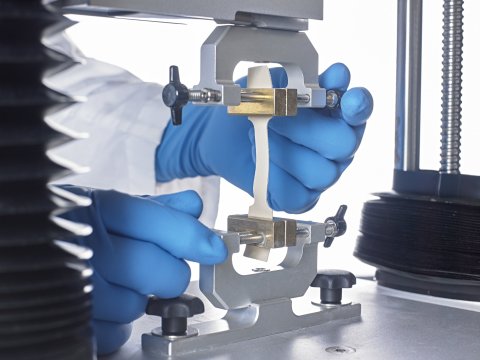
If the idea of synthesizing an entire human genome alarms you, you're not alone—even some synthetic biologists, like Stanford's Endy, are wary of the notion. The researchers behind GP-write have made it clear that they have no intention of creating artificial people with their synthesized DNA; rather, their work will be confined to synthesizing human cells, in an effort to better understand how the human genome works—and, potentially, how to make it work better. But any attempt to engineer the genetic code of living beings raises ethical concerns—first over safety, and even more so, over success. What happens if an engineered plant or animal escapes into the wild, where its impact on the environment would be hard to predict? Engineering human cells to eliminate deadly genetic disorders might seem straightforward, but where would we draw the line between treatment and enhancement? "We're developing powerful tools that are changing what it is to be human," says Jim Thomas, a researcher with the technology watchdog the ETC Group. "The worry is that you could have market-driven eugenics."
Of course, those ethical questions assume that synthetic biologists will be able to replicate a human genome—and that's far from certain. Scientists have yet to fully synthesize the genomes of much simpler single-celled organisms like yeast, so it could take far longer than a decade to learn how to write the 20,000 or so genes in a human genome. And like all technologies moving from the lab to the real world, synthetic biology will need to compete with conventional products in the market and at scale. Over the past several decades, startups that employed the tools of synthetic biology to produce advanced biofuels burned through hundreds of millions of dollars in a mostly futile effort to beat cheap gasoline. But whether it happens in the near term or the long term, the science behind synthetic biology—the ability to read and write the code of life—is already with us. And it's poised to re-engineer the world as we know it.
Synthetic Biology
Look out your window. Every bit of living matter you see—the tree bending toward the sun, the sparrow winging on the breeze, the person walking past—operates on the same genetic code, the nucleobases of DNA: cytosine (C), guanine (G), adenine (A), thymine (T). This is the programming language of life, and in its basics it hasn't changed much since it arose out of Earth's primordial ooze. Just as the English language can be used to write both "Baa, Baa Black Sheep" and Ulysses, so can DNA in all its combinations write the genome of a 2 mm long E. coli bacterium and a 30-meter-long blue whale . "The same DNA in humans is the same DNA in every organism on the planet," says Jason Kelly, the CEO of Ginkgo Bioworks, a synthetic biology startup based in Boston. "This is the fundamental insight of synthetic biology."
The language of DNA may have been written billions of years ago, but we learned to read it only in recent years. Sequencing DNA—determining the precise order of the C, G, A and T—was first done only in the 1970s, and for years it was laborious and expensive. It took more than 10 years and about $2.7 billion for the scientists behind the Human Genome Project to complete their mission: the first full sequence draft of the genes that encode a human being. But thanks in part to technology advances driven by that public-private effort, the price of sequencing DNA has plummeted—it now costs around $1,000 to sequence a person's full genome—even as the speed has multiplied, to little more than a day.
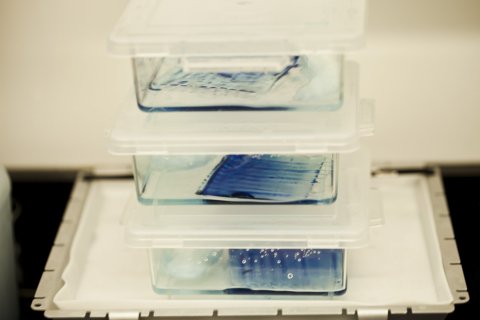
If that sounds familiar, it should—the same thing happened to the cost and speed of microchips over decades past, as Intel co-founder Gordon Moore predicted in the law that bears his name. And just as faster and cheaper microchips drove the computer revolution from the days of room-size mainframes through the dawn of the iPhone, so does cheap DNA reading—and increasingly, writing—make possible the revolution of synthetic biology. "It wasn't merely that you could do it, but that the costs came down so much starting 15 to 20 years ago," says Rob Carlson, the managing director of Bioeconomy Capital. "The improvements were even faster than Moore's Law."
Carlson should know. The Carlson Curve, the biotech equivalent of Moore's Law, was named after him—though like many in the field, he doesn't care for the name. (Carlson preferred "intentional biology," but biologists demurred—they thought the term made it sound as if their work hadn't been intentional before.) Synthetic denotes fake and artificial, the imitation of natural—think synthetic fabrics like nylon and polyester—but that's not how most synthetic biologists view their craft. To Stanford's Endy, who helped launch the movement when he was at MIT more than a decade ago, synthetic biology is about understanding the messy process of life at the cellular level and above through the process of engineering it. "We don't know how to do it, so we try, and one learns by doing," says Endy.
There's a quote that synthetic biologists repeat like a mantra, from the great theoretical physicist Richard Feynman: "What I cannot create, I do not understand." Feynman didn't exactly say those words—the phrase was found on the physicist's blackboard at CalTech at the time of his death. But to synthetic biologists, it means that the process of editing and writing DNA—engineering life—is necessary for us to better understand how DNA works. To that end, scientists have worked to synthesize genomes—meaning writing and printing whole artificial genes, rather than copying existing DNA, as in cloning—of organisms, starting with the simplest ones, in an effort to understand what the words in the genetic book of life really mean. An initial success came in 2010, when the geneticist Craig Venter—who helped lead the Human Genome Project—and his colleagues created the first synthetic cell, writing the entire genome of a tiny bacterium called Mycoplasma mycoides and inserting it into the empty cell of another bacterium. (They nicknamed the cell Synthia.) That was a remarkable achievement in its own right, but in 2016 Venter and his team went one better, taking Synthia's genome and methodically breaking it down until they reached the minimum number of genes required to sustain life. By stripping life to its basics, researchers could discover what each gene actually did. "The aim is to make something simple, to remove complexity, so you can begin engineering," says Sophia Roosth, a historian of science at Harvard University and the author of the new book Synthetic: How Life Got Made.
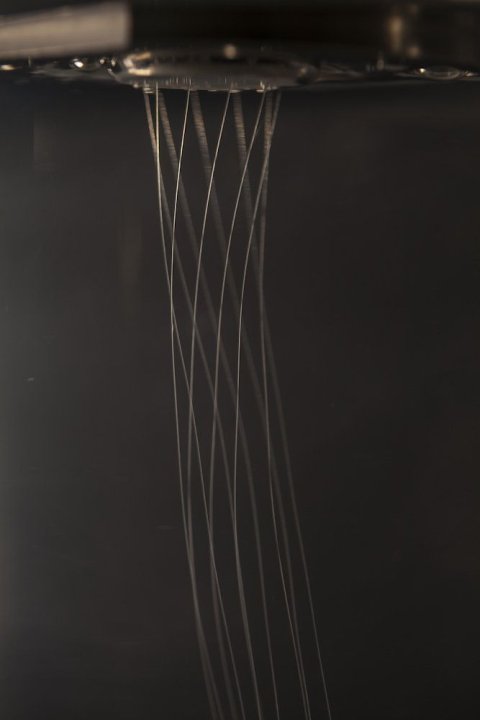
As it turned out, even the world's simplest bacterial genome was more complicated than scientists might have suspected. Of the 473 genes in Venter's pared-down, synthetic cell, the functions of 149 were completely unknown. That's almost a third, which underscores how far scientists have to go before they can truly claim to understand the genetic code that we can now sequence so easily—let alone effectively synthesize the genomes of much bigger and more complex organisms. It brings to mind another Feynman quote—"the difference between knowing the name of something and knowing something."
Rewriting the Book of Life
To actually know, scientists will need to sequence, synthesize and program vast amounts of genetic data. You design an organism, build it—through DNA synthesis or through gene-editing tools like CRISPR—test it out in the lab and, hopefully, learn from the experiment. Then you do it again, and again, in a cycle called design-build-learn-test. In the case of Venter's synthetic cell, for instance, scientists would add or subtract a gene at a time and then look to see what happened to their organism. If the synthetic bacterium died, that was a pretty good sign that the gene in question was important. "That to me is the heart of engineering biology," says Nancy Kelley, another of the founders of GP-write.
But you'll only be able to learn as fast as you can design and build and test. That's why Carlson's Curve is so important. Think computer programming, which advances on a similar cycle. When Tom Knight, one of Jason Kelly's co-founders at Ginkgo Bioworks, was helping to build what would become the internet at MIT in the 1960s, he was programming on refrigerator-sized computers that required users to manually enter deck after deck of punched cards. It was slow and laborious—and that was about the speed of biological programming until fairly recently. "We would spend an entire afternoon doing by hand site-directed mutagenesis that would enable you to change a single A to a T in the genome of a bacteria," says Kelly. "That's like spending an afternoon changing a bit from a zero to a one on a computer."

Today, as Kelly notes, "a guy at Facebook can create a new product in a single afternoon," simply because computers have gotten so much faster. We may never be able to program biology as fast as we can a computer—in part because biology is made up of matter, however tiny, whereas computer code is just code—but we will keep getting faster. "Back in 2002 and 2003, it used to cost me $4 to press the DNA synthesis button once for one letter," says Endy. Now, says Emily Leproust, the CEO of San Francisco–based DNA synthesis startup Twist Bioscience, her company can synthesize a base pair—the essential building blocks of the DNA helix—for just 9 cents.
In the design-build-test-learn cycle of synthetic biology, Twist supplies the building materials. Labs and companies send orders for specific genes to Twist, and the company does the work of synthesizing them, printing tiny molecules of DNA on silicon. The turnaround time is a matter of weeks, and as Twist and other DNA synthesis companies get better, that will be shortened. As the barriers of cost and time fall, what is liberated is the imagination of synthetic biologists, who are able to rapidly try out ideas. Just as the dawn of the internet led to an array of tech startups in the 1990s—some of which are now pillars of the global economy, like Amazon and Google—so the commercialization of DNA-writing technology is giving birth to a fresh industry. Apple Founder and CEO Steve Jobs, shortly before his death from cancer, told his biographer that "I think the biggest innovations of the 21st century will be at the intersection of biology and technology. A new era is beginning."
Many companies and investors are convinced that synthetic biology could revolutionize some of the fundamental ways we live and do business. Technologists at companies including Microsoft believe that DNA could even overtake silicon in our hard drives as a storage medium. The genetic code, after all, is really just a means to preserve and transmit information—the information of how a living thing works. DNA is an incredibly dense medium—researchers this year developed a method theoretically capable of storing all of the data in the world on a single room's worth of DNA—and unlike existing physical recording mediums, there's no danger of it being made obsolete. Biology, after all, has been writing DNA for billions of years.
Twist has begun working with Microsoft to perfect the process of DNA storage, and in April the software company purchased 10 million strands of DNA from Twist as part of that agreement. "As much as the last century was about plastics, this century will be about biology," says Leproust.

At Ginkgo Bioworks, the biggest consumer of synthetic DNA on the planet, they can smell the future coming. Founded in 2008 by Kelly and four of his colleagues from MIT's pioneering synthetic biology program, Ginkgo designs customized living organisms—engineered baker's yeast—that can produce flavors and fragrances that are usually derived from plants. Ginkgo has partnered with French perfume company Robertet to create a rose fragrance by extracting the genes from real roses, injecting them into yeast and then engineering the microbe's biosynthetic pathways to produce the smell of a rose—which apparently smells just as sweet when emitted from a yeast. That might come as a surprise to some consumers who don't know that the active ingredient in their perfume came from engineered microbes. But it's worth noting that the yeast itself isn't a part of the perfume, and the rose oil it produces has a claim to be far more natural than any chemical substitute. "We said, What if instead of going into a field of roses to get rose oil, you can run a brewery?" says Kelly. "And instead of brewing beer, you brew rose oil? We develop those designed yeast using our platform, and we license it out to our customers."
Synthetic biologists won't be satisfied with simply copying existing forms of life; they want to engineer something new, and even bring long-dead organisms back to life. Ginkgo is working on extracting DNA molecules from plant specimens preserved in herbariums, to synthesize the fragrances of flowers that have gone extinct, like an olive bush from the South Atlantic island of St. Helena that disappeared from the wild in 1994. The Bay Area startup Bolt Threads has engineered yeast microbes that can secrete spider silk, a material that is stronger than steel and yet extremely lightweight. Bolt has already used the spider silk thread to make ties, but the superstrong material could have a future in pharmaceutical products and the military. (The company is also an excellent example of why the decrease in the cost of DNA synthesis is so important—it has gone through some 4,000 formulations to properly engineer yeast capable of making spider silk.) In the lab, Colorado State University biologist June Medford is working with the Defense Department (and its $7.9 million grant) to engineer plants that would turn white in the presence of a bomb. Medford imagines that the engineered plants—which are likely years away—could be used in airport security lines, perhaps in place of multimillion-dollar wave scanners. "Plants have developed over 4 billion years to sense and respond to their environment," she says. "We identify a synthetic biology component that enables that and plug it into the natural infrastructure."
Infrastructure is an apt term. Right now, ours is powered mostly through minerals and petrochemicals, but synthetic biology offers the possibility of an infrastructure with built-in sustainability. As a farmer's field reliably demonstrates every spring, biology is renewable in a way that coal or oil or iron simply isn't. Biology is also simply very, very good at what it does, which is sustainable growth. All the plants on Earth, Endy says, harness 90 terawatts of energy, which he notes is about four and a half times the energy currently used by humanity. A biological cell can carry out complex operations far beyond the scope of our smartest artificial intelligence. "Biology is better at making small precise things than Intel is, and it makes more big physical stuff than car companies—all in a sustainable way," says Kelly. A pine tree, for example, is infinitely more complex and has a longer life than a Lexus.
Looking into the future, synthetic biologists think they may be able to program cells to grow into almost anything. "Imagine your iPhone being grown from an engineered design, with cases made from synthetic leather and a screen that produces its own light," says John Cumbers, the founder of SynBioBeta and co-author of the forthcoming book What's Your Bio Strategy?
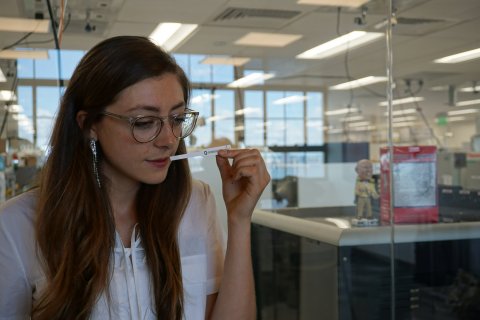
It's going to be a long time before we're harvesting iPhones in the fields. As cheap and as fast as DNA synthesis has gotten, it needs to be much cheaper and much faster. It may cost less than a dime to synthesize a single DNA base pair now, but Kelly points out that if a tech company like Facebook had to spend even a penny every time it changed a single bit in a software program, there would be no money left for anything else. "We're still in the IBM era of this technology," he says. DNA synthesis companies are limited in the length of DNA strands they can produce at a time—Twist's maximum, for instance, is about 3,200 base pairs long. To put that in perspective, the entire human genome is roughly 3 billion base pairs long. That means researchers need to take those strands and link them together—not impossible, but hardly seamless either. "There's a messiness to biology, and engineering it is hard," says MIT's Collins. "It's a lot harder than we thought it would be."
Soldiers Who Don't Need to Eat
On May 10, 2016, nearly 150 synthetic biology experts met behind closed doors at Harvard Medical School to discuss launching what could be one of the most ambitious and consequential missions in the history of human science. The project's initial name, HGP-write, declared the scope of that ambition: to successfully synthesize an entire human genome before the next 10 years were up. HGP-write came under initial criticism for that first closed summit—though the organizers claimed the secrecy was because an as yet unpublished paper was being discussed at the meeting—and the H was later dropped to take some of the emphasis off the human genome specifically and put more on the notion of simply accelerating the pace of DNA writing, just as the Human Genome Project massively accelerated DNA sequencing. But there's no doubt that many of the organizers hope that a mission to write human genes will be as galvanizing as reading them was. "We're humans, and we see through the lens of humanity," says Autodesk's Hessel. "This is the next grand challenge for synthetic biology."
GP-write hopes to raise $100 million for the project, though at its most recent meeting, in New York in May—which was open to the public—not much actual funding had yet materialized. One exception was Columbia University's Harris Wang and New York University's Jef Boeke, who received a $500,000 grant from the Defense Department to study how human cells could be engineered to become self-sufficient nutrient factories. Early in their evolution, animal cells lost the ability to manufacture certain vitamins and essential amino acids, which we now need to get through our diet. But plant, fungi and bacteria cells are still capable of producing those nutrients through photosynthesis, and through borrowing those gene pathways, it might be possible to engineer human cells that could do the same. That would have an immediate benefit in reducing the cost of developing human cell lines used in laboratory studies, as scientists might not have to feed self-sufficient cells with serum. But it doesn't take a conspiracy theorist—or a science fiction writer—to picture how the Pentagon might put to use soldiers who don't need to eat. For his part, Wang imagines the possibility of phototrophic cells helping human beings survive the rigors of long-term space travel—though he wants to make it clear that he is not trying to engineer the perfect astronaut. "We could make quantum leaps in terms of the type of things that evolution would take a long time to develop, or might never do," says Wang.
The sensitivity around GP-write is a reminder that as synthetic biology moves from bacteria into the realm of the human, the accompanying ethical concerns will only grow. If we can synthesize a human genome, how long will it be before we're able to engineer ourselves—or our offspring? A group of Chinese researchers shocked the science world in 2015 when they became the first to use the synthetic biology tool CRISPR to edit the genomes of human embryos, but just this year a major federal panel ruled that similar studies could be ethically allowable "for compelling reasons." But what would those reasons be? While few people might be against using the techniques of synthetic biology to eliminate genetic disorders or reduce disease, where do we draw the line between medicine and enhancement? The possibility that the rich could have first access to technology to "perfect" themselves and their children risks making political and economic inequality a concrete biological fact. Beyond what we might do to ourselves, how will the world change if many of the products that we now gather from the wild, or grow on farms, are instead engineered in biological factories? "The best time to have these conversations about a new technology is right before it becomes plausible," says Hank Greely, a bioethicist at Stanford. "Now is the time to talk about it."
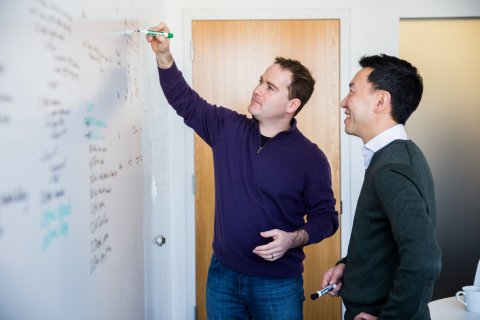
And so we will, as the products of synthetic biology steadily migrate from the laboratory into the world around us. If the skepticism surrounding genetically modified foods is any lesson, that migration won't happen without a fight. According to a 2015 Pew Research Center poll, only 37 percent of the general public believes GM foods are safe to eat, compared with 88 percent of scientists. But while the burden of proof will be on the proponents of synthetic biology, it's worth keeping in mind that while the solutions are debatable, the existential environmental challenges our planet faces—around food, fuel and the climate—are not. Right now, some 40 percent of the world's land is taken up for food production, which leaves less and less space for any other species—and despite that, one in nine people still lacks enough to eat. Yet somehow we'll need to feed an additional 2 billion people by midcentury. The world may need to reach zero total carbon emissions as early as 2050 to escape dangerous climate change—yet we've barely begun to stop the increase in global emissions, let alone ratchet them back, and 1.2 billion people still lack any access to electricity, renewable or not. The status quo will not get us to where we need to be.
Harvard's George Church is one of the giants of synthetic biology and a force behind the GP-write group. He's also the kind of bold scientist who makes bioethicists and environmentalists worry, by planning to resurrect the extinct wooly mammoth through gene editing and openly musing on the possibility of genetically enhancing human beings by making them invulnerable to disease. When Stephen Colbert had Church on The Colbert Report in 2012, the TV host asked the scientist: "How do you think your work will eventually destroy all mankind?" He was joking—mostly.
Whether the kind of radical biological changes that scientists like Church envision should happen—or ever will happen—he's right to note that the dangers go more than one way. "I am a critic of the uncritical precautionary principle," he says. "There are risks of doing nothing or going slowly." A radical age may demand radical solutions.


